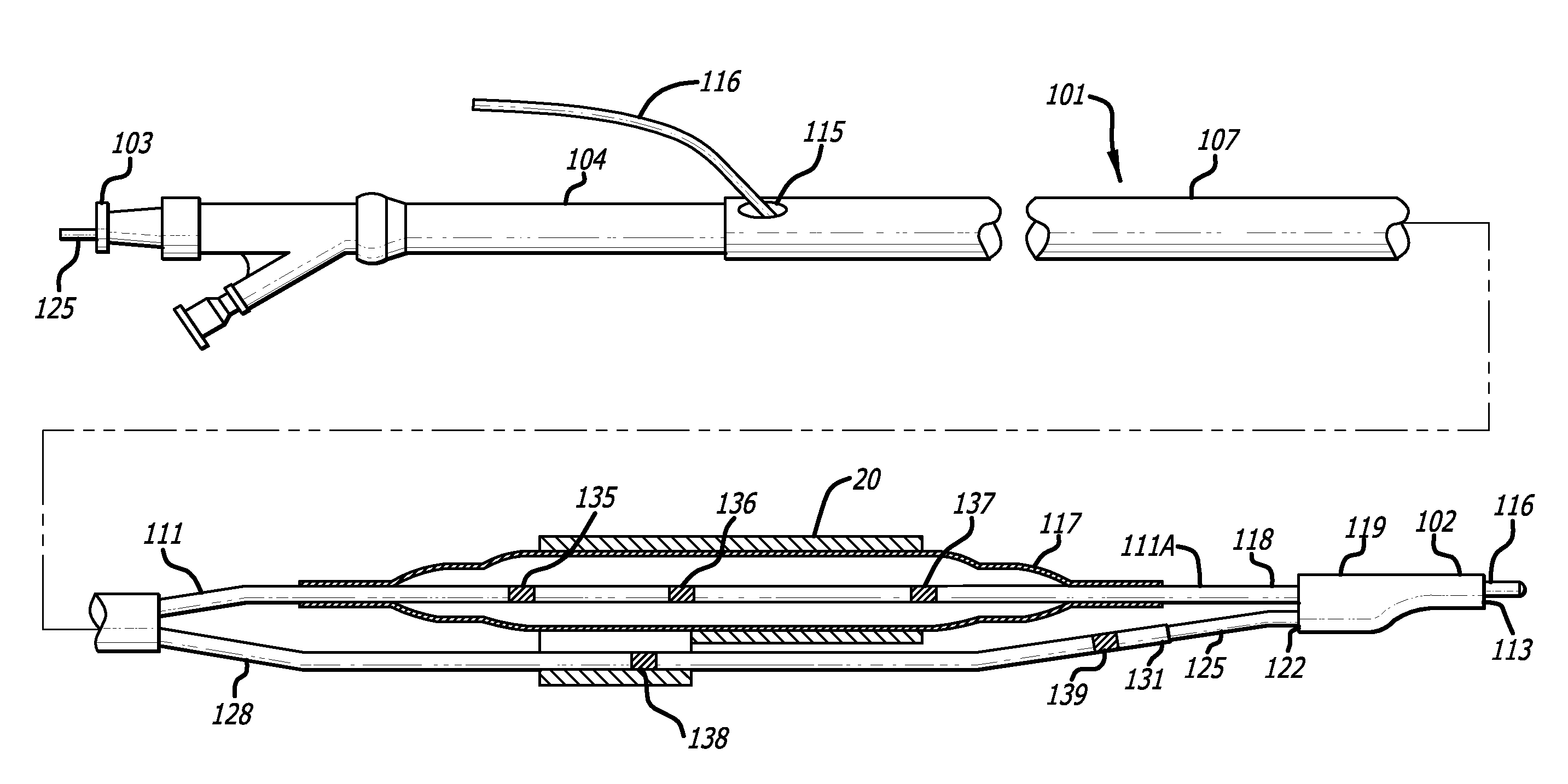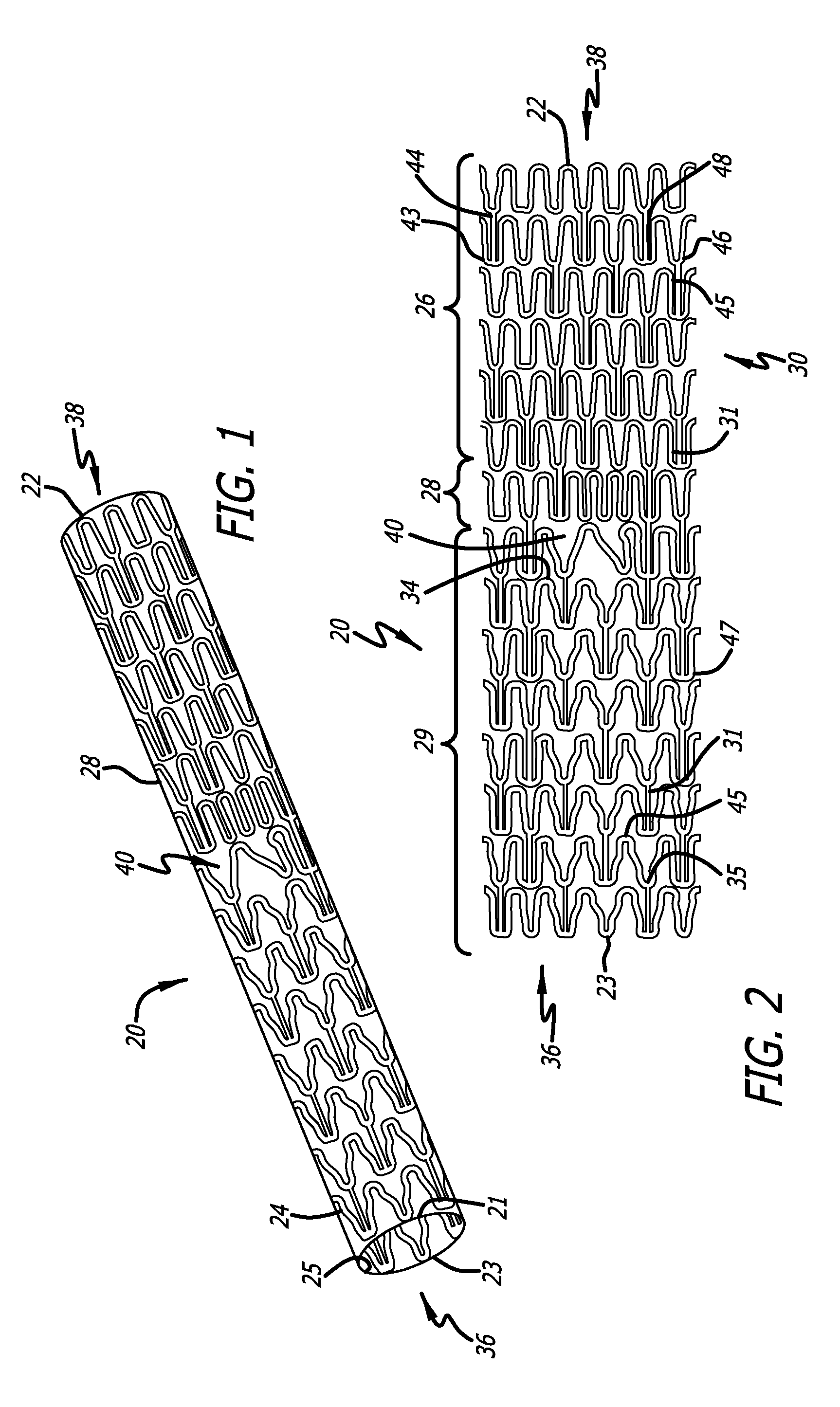Stent and catheter assembly and method for treating bifurcations
a technology of stents and catheters, applied in the field of stents and stent delivery and deployment assemblies, can solve the problems of affecting the repair of vessels that are diseased at the bifurcation, affecting the radiopacity of markers, and causing restenosis, etc., to achieve the effect of reducing or preventing the flow of polymeric materials, reducing the risk of restenosis, and reducing the risk of diseas
- Summary
- Abstract
- Description
- Claims
- Application Information
AI Technical Summary
Benefits of technology
Problems solved by technology
Method used
Image
Examples
Embodiment Construction
[0064]The present invention includes a stent and stent delivery catheter assembly and method for treating bifurcations in, for example, the coronary arteries, veins, peripheral vessels and other body lumens.
[0065]The stent of the present invention can be implanted in the main or side branch vessels to treat a number of disease configurations at a bifurcation, but not limited to, the following:
[0066]1. Treatment of a parent or main vessel and the origin of the side branch at a bifurcation with any angle associated between the side branch and parent vessel.
[0067]2. Treatment of a parent vessel proximal to the carina and the side branch vessel simultaneously.
[0068]3. Treatment of the proximal vessel extending only into the origin of the side branch and the origin of the distal parent at the bifurcation.
[0069]4. Treatment of the area at the bifurcation only.
[0070]5. The origin of an angulated posterior descending artery.
[0071]6. The origin of an LV extension branch just at and beyond th...
PUM
 Login to View More
Login to View More Abstract
Description
Claims
Application Information
 Login to View More
Login to View More - R&D
- Intellectual Property
- Life Sciences
- Materials
- Tech Scout
- Unparalleled Data Quality
- Higher Quality Content
- 60% Fewer Hallucinations
Browse by: Latest US Patents, China's latest patents, Technical Efficacy Thesaurus, Application Domain, Technology Topic, Popular Technical Reports.
© 2025 PatSnap. All rights reserved.Legal|Privacy policy|Modern Slavery Act Transparency Statement|Sitemap|About US| Contact US: help@patsnap.com



